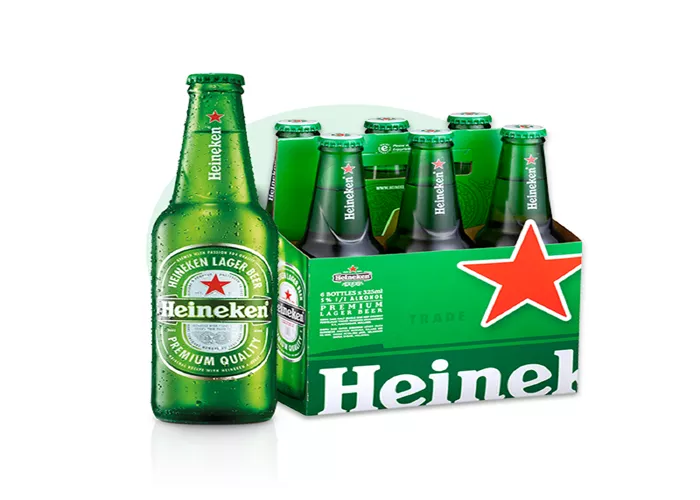1. Ingredients Used
Water:
High-quality water is the main component of Heineken non-alcoholic beer, just like in regular beer. It serves as the base for dissolving and carrying the other ingredients, and its purity and mineral content can affect the final taste of the beer.
Barley Malt:
Barley malt is a key ingredient that provides the characteristic color, flavor, and body to the beer. It is carefully selected and processed to ensure the right balance of sweetness and maltiness in the final product.
Hop Extract:
Hop extract is added to impart bitterness, aroma, and flavor to the beer. It gives Heineken non-alcoholic beer its distinct hoppy taste and helps to balance the sweetness of the malt3.
Heineken A-Yeast:
The specific yeast strain used by Heineken, known as Heineken A-Yeast, plays a crucial role in the fermentation process. It helps to convert the sugars in the malt into alcohol and other flavor compounds, although in the case of non-alcoholic beer, the alcohol is later removed.
2. The Brewing Process
Mashing:
The first step in the brewing process is mashing, where the barley malt is mixed with hot water. This activates the enzymes in the malt, which break down the starches into fermentable sugars. The mixture is held at a specific temperature for a period of time to allow for proper enzymatic activity, resulting in a sweet liquid called wort.
Lautering:
After mashing, the wort is separated from the spent grains through a process called lautering. This involves draining the liquid through a filter or sieve, leaving behind the solid grains. The wort is then transferred to a kettle for further processing.
Boiling:
The wort is boiled in the kettle, and during this stage, the hop extract is added. Boiling serves several purposes, including sterilizing the wort, concentrating the flavors, and extracting the bitterness and aroma from the hops. The length and intensity of the boil can affect the final flavor profile of the beer.
Fermentation:
Once the boiling is complete, the wort is cooled and transferred to a fermentation vessel. Yeast is then added to initiate fermentation. The yeast consumes the sugars in the wort and converts them into alcohol and carbon dioxide. In the case of Heineken non-alcoholic beer, this fermentation process is carefully controlled to limit the amount of alcohol produced or to produce alcohol that will later be removed.
3. Alcohol Removal
Vacuum Distillation:
Heineken uses vacuum distillation to gently remove the alcohol from the beer. This process involves heating the beer in a vacuum environment, which lowers the boiling point of the alcohol and allows it to be separated from the other components more easily. The vacuum distillation process is carefully controlled to ensure that the flavor and aroma of the beer are preserved while effectively reducing the alcohol content to a very low level or to zero.
Blending with Natural Flavourings:
After the alcohol removal process, the beer is blended with natural flavourings to enhance and balance the taste. These flavourings may include additional hop extracts, malt extracts, or other natural ingredients that help to recreate the full-bodied flavor of regular Heineken beer and provide a smooth and satisfying drinking experience.
4. Filtration and Carbonation
Filtration:
The beer is then filtered to remove any remaining impurities or solids, resulting in a clear and bright appearance. Filtration helps to improve the clarity and stability of the beer, ensuring that it has a clean and smooth texture.
Carbonation:
Carbonation is the process of adding carbon dioxide to the beer, which gives it its characteristic fizziness. Heineken non-alcoholic beer is carbonated to the appropriate level to provide a refreshing and lively mouthfeel, similar to that of regular beer.
See Also: Which Country Drinks the Most Beer? A Complete Guide
5. Packaging
Bottling or Canning:
Once the beer has been filtered and carbonated, it is ready for packaging. Heineken non-alcoholic beer is typically packaged in bottles or cans, which are carefully filled and sealed to maintain the quality and freshness of the product. The packaging is designed to protect the beer from light, air, and other external factors that could affect its flavor and shelf life.
Labeling and Quality Control:
Before the packaged beer is released to the market, it undergoes strict quality control procedures to ensure that it meets Heineken’s high standards. Labels are applied to the bottles or cans, providing information about the product, including its ingredients, alcohol content, and nutritional information. The beer is also tested for taste, aroma, appearance, and other quality parameters to ensure consistency and customer satisfaction.
Conclusion
You might be interested


